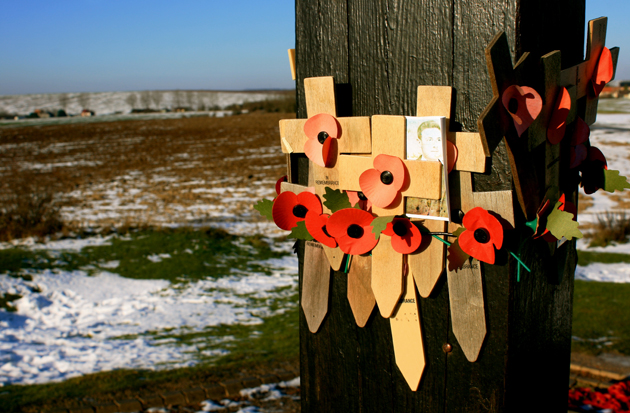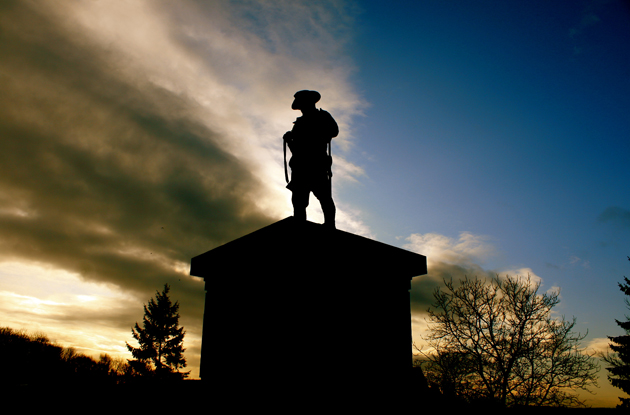At the Going Down of the Sun
The one thing you don’t expect, that takes you completely by surprise, is the beauty. As your heart pounds and your vision is distorted by misty eyes, you find yourself just standing and staring, silently, at gravestone after gravestone; white monuments against a brilliant white ground. And it’s stunning.
Encased in snow during winter, the battlefields of Belgium and France need to be experienced. Almost every family has a story from the Great War – a relative, a memory – and coming here gives those stories meaning, gives history some context. The Menin Gate, Hill 60, Polygon Wood, each memorial has its own significance and whether you travel by car, bike or foot, being here really helps you comprehend the enormity of it all.
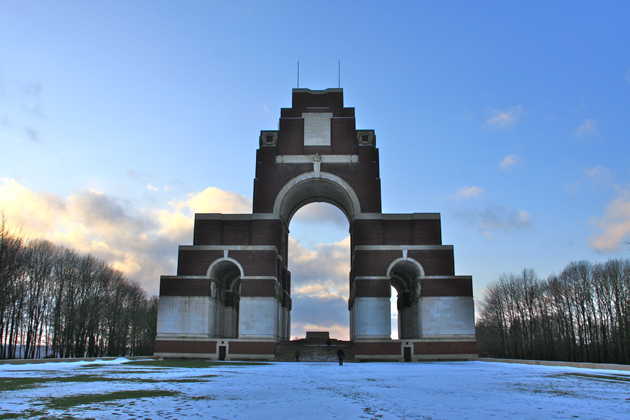
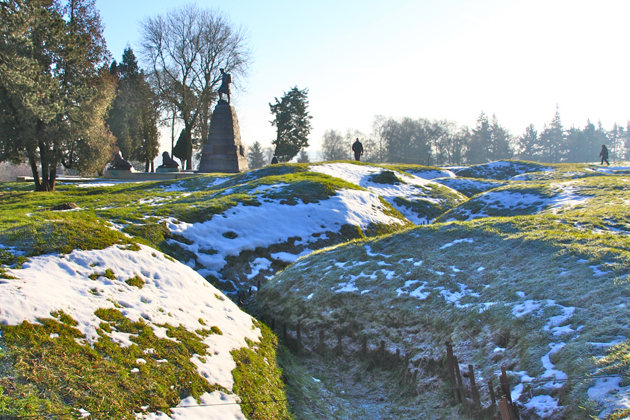
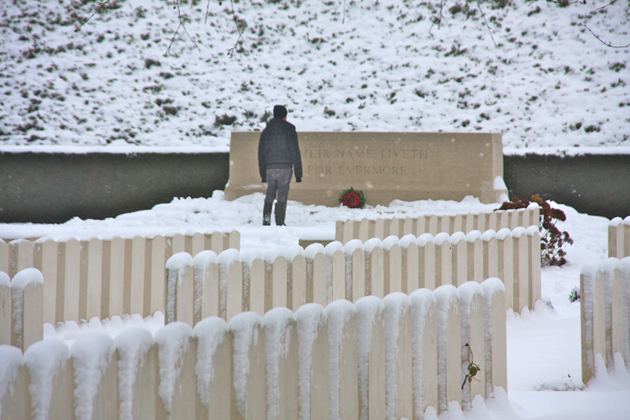
From Tyne Cot Cemetery you can see where the 1917 Battle of Passchendaele began and ended. Once a mess of quicksand, the sloped ground now holds thousands of immaculate graves, each engraved with an epitaph that’s simultaneously poetic, incensed and tender. “Would some thoughtful hand in this distant land please scatter some flowers for me”. “He is not dead for such as my noble husband lives for ever”. “Another life lost, hearts broken, for what”. Beyond the graves is a wall covered in 33,000 names belonging to soldiers missing in action. Never found, never buried, but remembered.
Even the smallest sites prove meaningful. At Fromelles Australian troops had their first and most disastrous encounter on the Western Front. Understandably, the memorial here is simple. 410 Australian soldiers sharing two gravesites, marked by a large paved cross. Each soldier has a rose bush growing around the outside of the plot. On a larger scare there’s Newfoundland Memorial Park, a Canadian memorial filled with grass-covered trenches. Wandering through these you come across a small cemetery where many graves are shared, Private and Corporal buried together. Reading the stones certain things strike you – the ages of those fallen and the fact that so many simply state “A soldier of the Great War Known Unto God”.
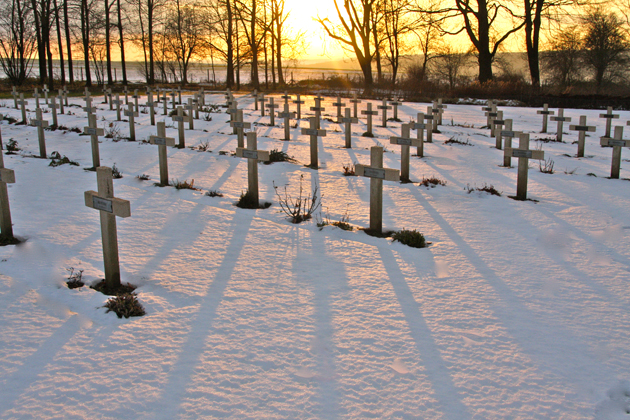
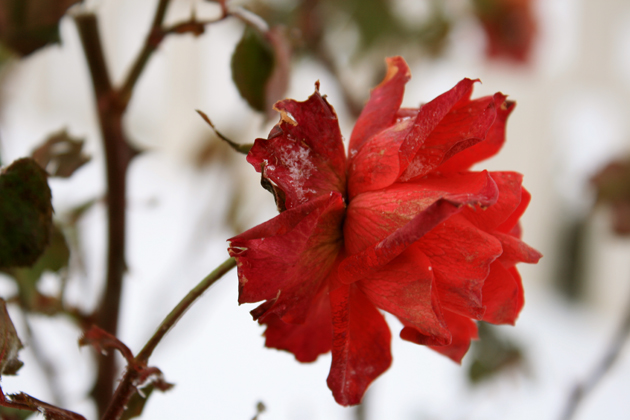
At Lochnager Crater, the site of an explosive-packed mine that was detonated on July 1st 1916, the first day of the Battle of the Somme, a lone bench overlooks the surrounding snow-covered fields. Flat, seemingly barren and freezing, looking at this land, it’s almost possible to imagine the bleakness of a wartime winter. Beside this bench stands a poppy-covered cross, made with wood from Tynesdie in the UK, symbolically honouring the British who fought here.
Among these battlefields, history is very much alive. But it’s not necessarily just the cemeteries or memorials that remind you of this. Instead you realise when you walk past a freshly plowed field and inevitably spot the smallest piece of aged shrapnel. As locals are quick to point out, you don’t need to dig very far to find something.
